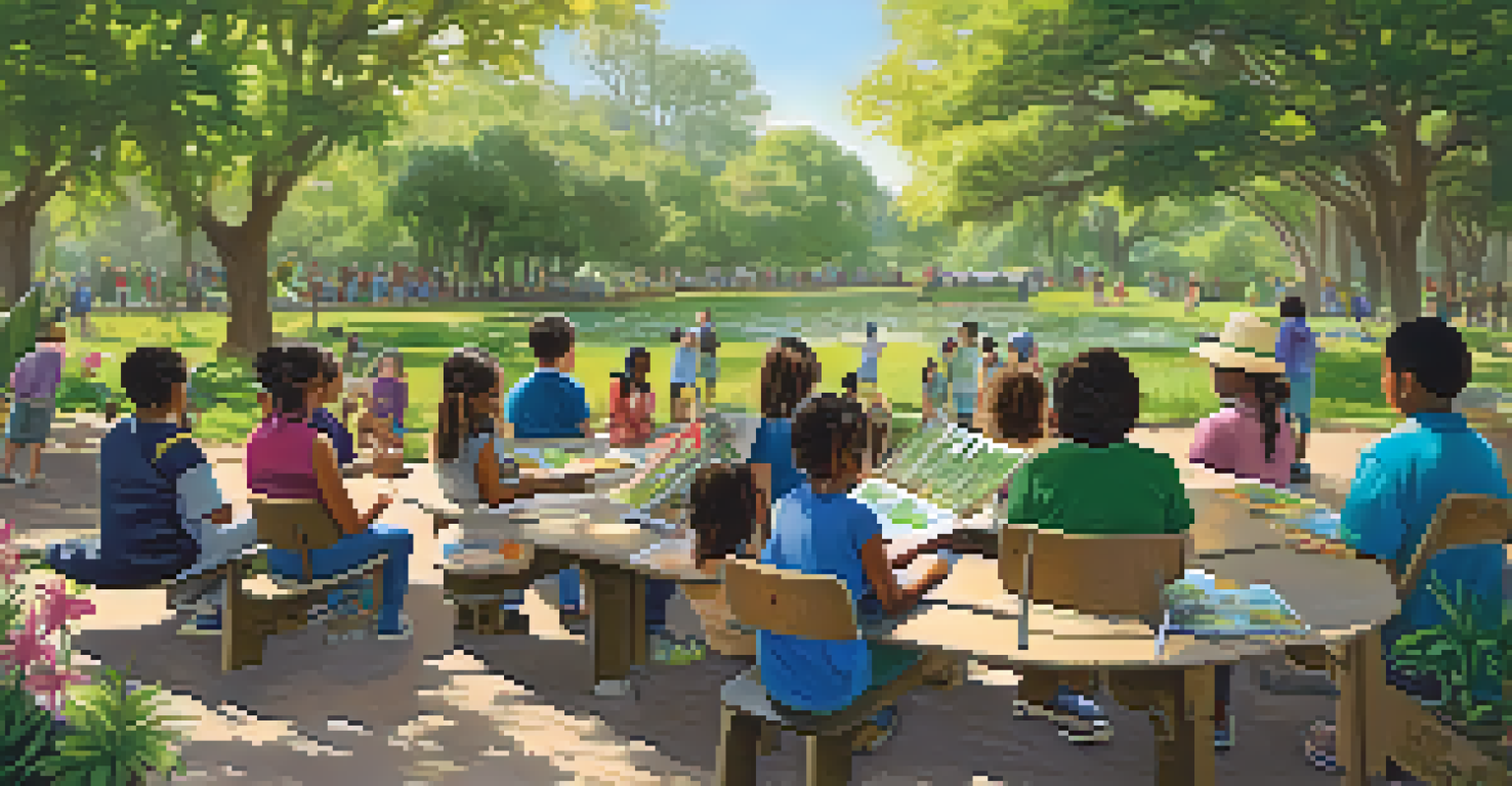How San Jose Parks Support Local Wildlife Conservation Efforts

Introduction to San Jose's Wildlife Conservation Efforts
San Jose boasts a diverse range of parks that serve as vital habitats for local wildlife. These green spaces are not just for recreational activities; they play a crucial role in supporting biodiversity. By providing natural environments, they create sanctuaries for various species, from birds to small mammals.
In every walk with nature, one receives far more than he seeks.
The parks are strategically designed to maintain ecological balance, which is essential for wildlife survival. They offer food sources, nesting sites, and protection from predators, allowing local species to thrive. In this way, they contribute significantly to conservation efforts in the region.
Many residents might not realize the impact these parks have on wildlife conservation. By simply enjoying a walk or a picnic, they are indirectly supporting the habitats that many animals rely upon. This connection between community enjoyment and conservation is what makes these parks truly special.
Native Plant Restoration and Its Benefits
One key aspect of wildlife conservation in San Jose parks is the restoration of native plants. Native species are crucial because they provide the appropriate food and shelter that local wildlife needs. By focusing on these plants, parks create an environment where wildlife can flourish naturally.

Restoring native vegetation also helps to combat invasive species that threaten local ecosystems. Invasive plants can outcompete native species, leading to reduced food sources for wildlife. By removing these invaders and reintroducing native plants, parks enhance the resilience of local habitats.
Parks Support Wildlife Biodiversity
San Jose's parks provide essential habitats that support local wildlife, fostering biodiversity and ecological balance.
Moreover, native plant restoration promotes a balanced ecosystem, which benefits not just wildlife but also the surrounding community. Healthy ecosystems contribute to cleaner air and water, making parks more enjoyable for everyone. This holistic approach to conservation illustrates the interconnectedness of all living things.
Wildlife Corridors: Connecting Habitats
Wildlife corridors are essential for allowing animals to move between habitats safely. San Jose parks have been designed with these corridors in mind, ensuring that local wildlife can travel to find food and mates without facing urban threats. This connectivity is vital for maintaining genetic diversity among species.
The greatest threat to our planet is the belief that someone else will save it.
These corridors also help reduce human-wildlife conflicts. When animals have safe passage through urban areas, they are less likely to venture into neighborhoods, which can lead to dangerous encounters. By creating designated pathways, parks help keep both wildlife and residents safe.
Incorporating wildlife corridors into park designs is a thoughtful approach to urban planning. It not only supports animal populations but enriches the overall ecosystem. These corridors symbolize a commitment to coexisting with nature in an urban setting.
Educational Programs Promoting Conservation Awareness
San Jose parks host various educational programs aimed at raising awareness about wildlife conservation. These initiatives engage the community by providing information on local flora and fauna, fostering a sense of stewardship among residents. Education is a powerful tool in conservation efforts.
Workshops, guided nature walks, and school programs are just a few ways parks educate the public. Participants learn about the importance of biodiversity and how they can contribute to conservation efforts in their daily lives. This hands-on experience often sparks a passion for wildlife protection and environmental stewardship.
Community Drives Conservation Efforts
Community involvement in conservation projects enhances local stewardship and strengthens commitment to protecting wildlife.
By involving the community, these educational programs create a ripple effect. When people understand the significance of preserving local ecosystems, they are more likely to advocate for sustainable practices. This collective effort reinforces the importance of wildlife conservation in San Jose.
Community Involvement in Conservation Projects
Community involvement plays a vital role in the success of conservation projects in San Jose parks. Local volunteers often participate in activities such as tree planting, habitat restoration, and clean-up events. This hands-on engagement fosters a deeper connection between residents and their natural surroundings.
Additionally, community involvement helps to raise funds and resources for conservation initiatives. Local businesses, schools, and organizations often collaborate with parks to support wildlife conservation efforts. This partnership approach strengthens the community's commitment to protecting local wildlife.
When residents see the direct impact of their contributions, it encourages ongoing participation. The sense of accomplishment that comes from helping to restore a park or protect a species creates lasting advocates for wildlife conservation. This grassroots involvement is essential for sustaining these efforts.
Monitoring Local Wildlife Populations
Monitoring wildlife populations is a critical aspect of conservation in San Jose parks. Park officials and local organizations conduct regular surveys to track the health of animal populations and their habitats. This data helps conservationists identify trends and make informed decisions to protect vulnerable species.
Citizen science initiatives also encourage community members to participate in monitoring efforts. By reporting sightings or documenting changes in wildlife activity, residents contribute valuable information that supports ongoing conservation strategies. This collaborative approach enhances the overall effectiveness of monitoring programs.
Education Fosters Conservation Awareness
Educational programs in parks raise awareness about wildlife conservation, encouraging residents to engage in sustainable practices.
Regular monitoring not only aids in wildlife conservation but also helps raise awareness among residents. When people understand the challenges facing local wildlife, they are more likely to engage in conservation efforts. This shared responsibility fosters a community committed to protecting its natural heritage.
Sustainable Practices in Park Management
Sustainable practices are at the core of park management in San Jose. From using eco-friendly materials in park construction to implementing water conservation techniques, these efforts are designed to minimize environmental impact. This commitment to sustainability benefits both wildlife and the community.
For instance, parks utilize organic gardening methods to maintain green spaces, reducing the need for harmful pesticides. This approach not only protects wildlife but also promotes healthier ecosystems. By prioritizing sustainability, parks set a positive example for the community.

Moreover, sustainable practices enhance the resilience of local ecosystems. Parks that prioritize environmental health are better equipped to withstand challenges like climate change. This proactive approach ensures that the parks continue to be a refuge for wildlife for generations to come.